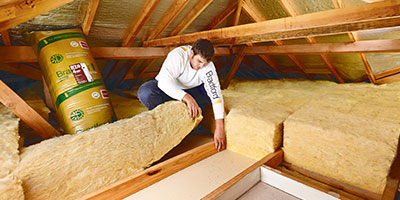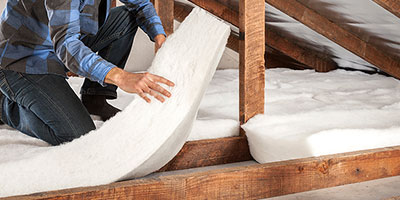Thermal insulation for existing homes
If your home is varying in temperature and you’re experiencing hot living conditions in summer or cold conditions in winter, then it's likely you need to consider the thermal comfort of your home.
-
Overview
There are ways to help improve your comfort and reduce those large electricity bills driven by prolonged use of air conditioners in summer or heaters in winter. Thermal insulation is the most important step you can take toward securing a comfortable and economical home environment.
There are a number of factors that can influence heat loss and heat gain in a home starting from house design, window treatments, orientation of the home, flooring, shading, construction material and insulation just to mention a few.
In an existing home it is hard to change some of these factors such as house design but insulation is a cost effective way to improve the movement of heat. By installing insulation and coupling this with shading devices over windows, you can reduce direct sunlight heat and minimise your need for air conditioning. Similarly in winter, a well insulated home reduces the need for heating as the warm air remains contained within the home.
Installing insulation in your ceiling is likely to have a large impact on the heat loss or heat gain in your home. If you already have ceiling insulation you may want to consider if the R-value is correct for your climate zone as you may need to replace it with a higher R-value of insulation. It is ideal to have insulation installed in your external walls, if you’re not the original home owner you may not know what’s behind the plasterboard.
If your home is built suspended from the ground then there is an opportunity to insulate the underfloor with thermal insulation and stop air travelling through the floor. Underfloor insulation can be installed in between the floor joists easily with brackets which hold the insulation in place.
Bradford also recommends considering the type of glass used in windows and any draughts around windows or doors.
Control heat flow by installing thermal insulation.
Designed to reduce heat transfer through the roof of your home, improving your home’s comfort and energy efficiency. Can reduce your energy bills for heating and cooling by up to 45%.Bradford Gold Hi-Performance boasting the highest available insulation levels, with R-values of R5.0 and R7.0
Bradford Polymax thermal ceiling batts are designed to maximise comfort and save energy by keeping your home warmer in winter and cooler in summer.Bradford’s Optimo™ is the highest rated underfloor insulation for suspended timber floors, keeping homes warmer and reducing energy costs through winter.







